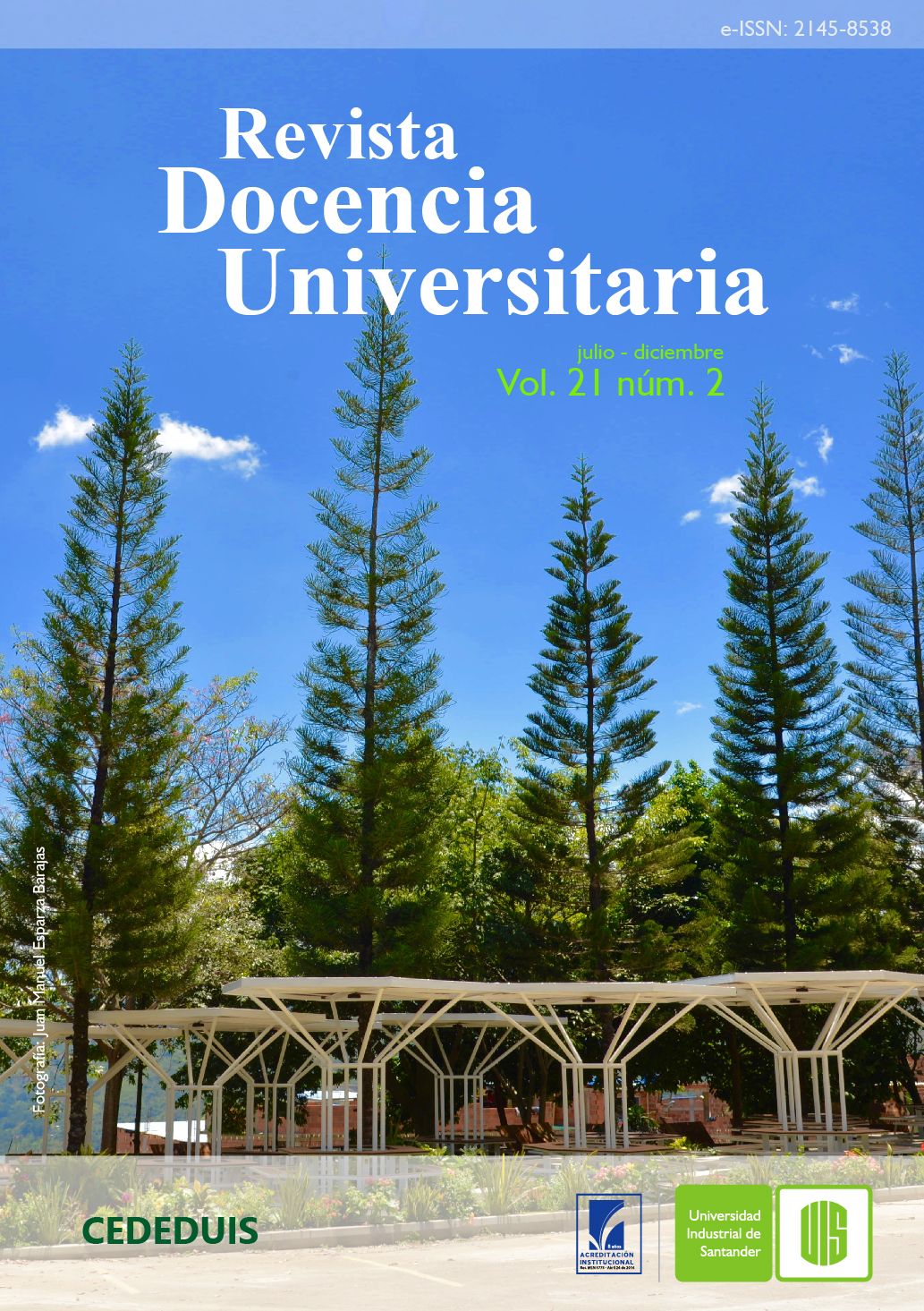Published 2020-12-30
Keywords
- information network,
- adolescence,
- behavior,
- research,
- trends
How to Cite
Copyright (c) 2020 Revista Docencia Universitaria

This work is licensed under a Creative Commons Attribution 4.0 International License.
Abstract
this article is intended to address a pressing issue, framed mainly in the digital trend that encloses the presence of social networks in the lives of adolescents, in this case belonging to the lower secondary level, and enrolled in two public schools of Bogota; all of which is part of an exploratory approach developed with the intention of confirming possible study problems associated with the aforementioned object. The investigation circumscribes its actions to an explanatory investigation under the non-experimental modality. A survey was applied to 1,106 students, which served to estimate a reality that highlights particular perceptions and behaviors around the digital issue in school environments, which in general seems to reflect the intense incidence of social networks in the daily life of young people in secondary education; where the excessive use of these, as well as cyberbullying or bullying as an expression of the virtuality that results from the violence exerted in person and that is extended to social networks as a form of continued psychophysical violence, seems to represent alarming and conflicting situations that require an investigative approach.
Downloads
References
- Bauman, Z. (2003) Modernidad Líquida. Fondo de Cultura Económica.
- Casalino, I. Ingunza, M. Jiménez, A. Véliz, M. Eiken, L. (2017) Significado y uso de los emojis de WhatsApp dentro de situaciones comunicativas interculturales https://repositorio.ulima.edu.pe/handle/20.500.12724/6091
- Castells, M. (1999) La era de la información. Alianza
- Crystal, D. (2002). Lenguaje e internet. Cambridge.
- Echeburúa, E. y Corral, P. (2010) Adicción a las nuevas tecnologías y a las redes sociales en jóvenes: un nuevo reto. https://www.redalyc.org/pdf/2891/289122889001.pdf
- Gascueña, R. (2016) La conversación wasap. https://dialnet.unirioja.es/servlet/articulo?codigo=7776067
- Hernández, K. Yánez, J. Carrera, A. (2017) Las redes sociales y adolescencia. Repercusión en la actividad física. http://scielo.sld.cu/pdf/rus/v9n2/rus33217.pdf
- Hernández, R., Fernández, C. y Baptista, P. (2014). Metodología de la investigación. McGraw-Hill.
- Peña, B. (2011). El alcance de la educación multimedia: las redes y la transformación social. https://www.researchgate.net/publication/262835257_ El_Alcance_de_la_Educacion_Multimedia_Las_Redes_y_la_Transformacion_Social/link /573b029508ae9ace840e81b8/download
- Requena, F. (1989) El concepto de red social. http://www.reis.cis.es/REIS/PDF/REIS_048_08.pdf
- Rincón A. Ávila, W. (2014) Simbiosis vital para describir el ciberbullying en Colombia. http://www.scielo.org.co/pdf/recig/v12n14/v12n14a09.pdf
- UNICEF (2020) Redes sociales y adolescentes: lo que tienes que saber https://www.unicef.org/uruguay/redes-sociales-y-adolescentes-lo-que-tenes-que-saber
